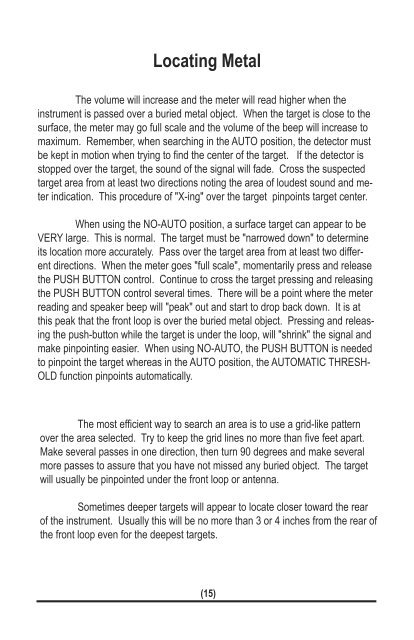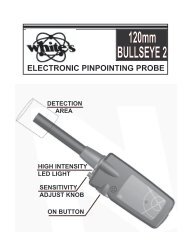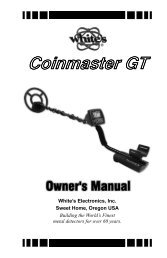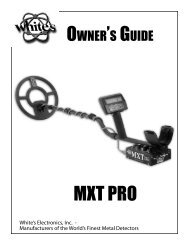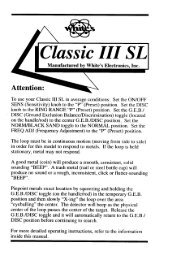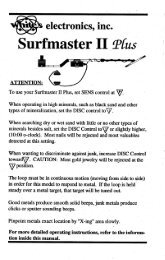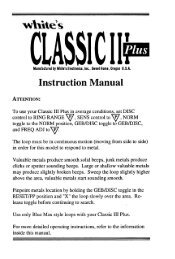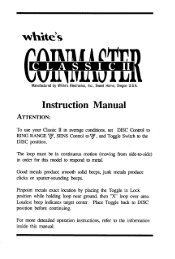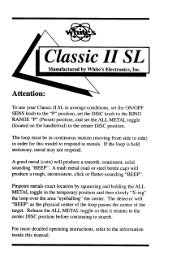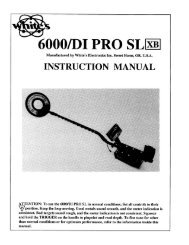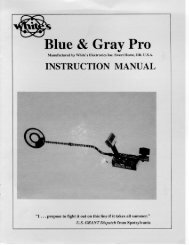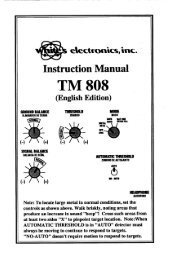TM 808 - White's Metal Detectors
TM 808 - White's Metal Detectors
TM 808 - White's Metal Detectors
Create successful ePaper yourself
Turn your PDF publications into a flip-book with our unique Google optimized e-Paper software.
Locating <strong>Metal</strong><br />
The volume will increase and the meter will read higher when the<br />
instrument is passed over a buried metal object. When the target is close to the<br />
surface, the meter may go full scale and the volume of the beep will increase to<br />
maximum. Remember, when searching in the AUTO position, the detector must<br />
be kept in motion when trying to find the center of the target. If the detector is<br />
stopped over the target, the sound of the signal will fade. Cross the suspected<br />
target area from at least two directions noting the area of loudest sound and meter<br />
indication. This procedure of "X-ing" over the target pinpoints target center.<br />
When using the NO-AUTO position, a surface target can appear to be<br />
VERY large. This is normal. The target must be "narrowed down" to determine<br />
its location more accurately. Pass over the target area from at least two different<br />
directions. When the meter goes "full scale", momentarily press and release<br />
the PUSH BUTTON control. Continue to cross the target pressing and releasing<br />
the PUSH BUTTON control several times. There will be a point where the meter<br />
reading and speaker beep will "peak" out and start to drop back down. It is at<br />
this peak that the front loop is over the buried metal object. Pressing and releasing<br />
the push-button while the target is under the loop, will "shrink" the signal and<br />
make pinpointing easier. When using NO-AUTO, the PUSH BUTTON is needed<br />
to pinpoint the target whereas in the AUTO position, the AUTOMATIC THRESH-<br />
OLD function pinpoints automatically.<br />
The most efficient way to search an area is to use a grid-like pattern<br />
over the area selected. Try to keep the grid lines no more than five feet apart.<br />
Make several passes in one direction, then turn 90 degrees and make several<br />
more passes to assure that you have not missed any buried object. The target<br />
will usually be pinpointed under the front loop or antenna.<br />
Sometimes deeper targets will appear to locate closer toward the rear<br />
of the instrument. Usually this will be no more than 3 or 4 inches from the rear of<br />
the front loop even for the deepest targets.<br />
(15)


